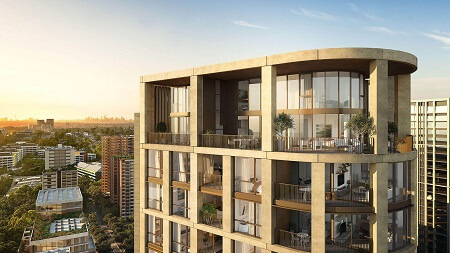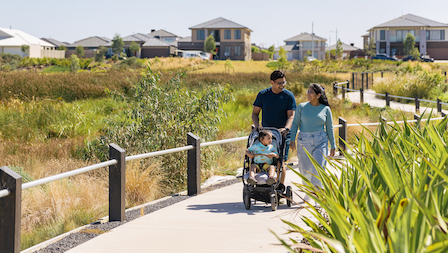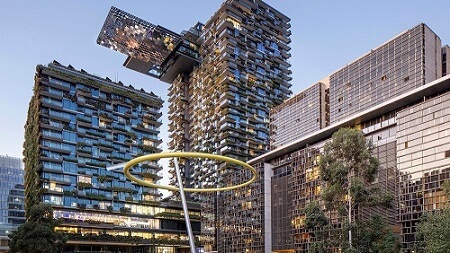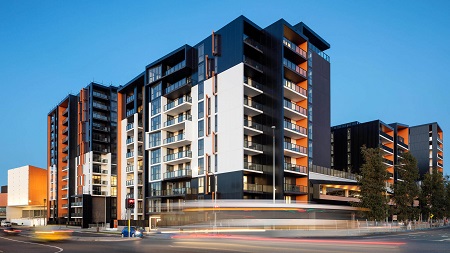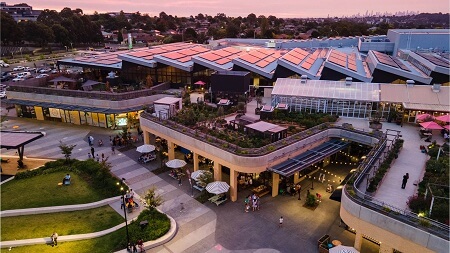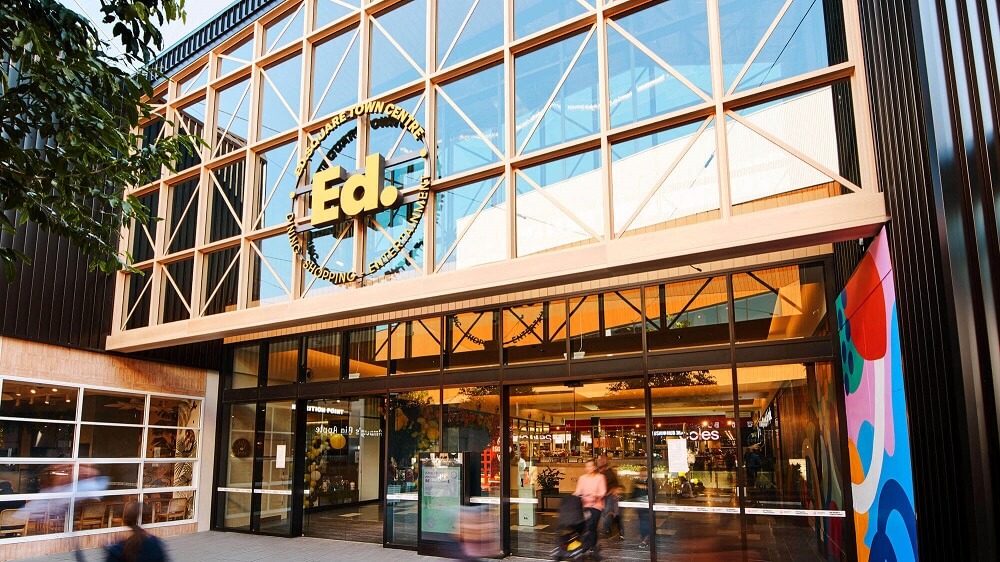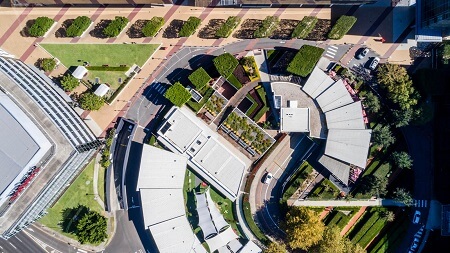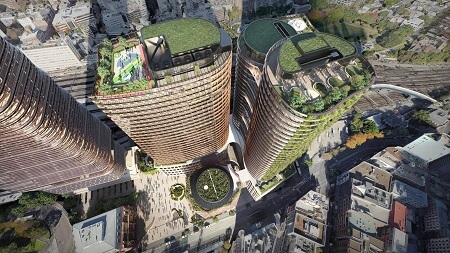The past, present and future of Australian home design

From the post-war suburban dream to the rise of solo living and the quest for sustainability, discover the forces shaping our homes today and the trends that will define them in the future.
The Australian housing landscape has undergonee a remarkable transformation over the last century. From modest post-war homes to sprawling modern mansions, the way we live has changed significantly. To delve deeper into these changes, we sat down with Emily Wood, Executive General Manager Development for Frasers Property Australia, and Anthony Burke, Professor of Architecture at UTS and host of Grand Designs Australia, for a fascinating Q&A session.
Could you give us a snapshot of key historical moments that have shaped Australian property over the past century? How do you believe global events like financial booms, busts, and world wars have impacted our homes and our perception of them?
Anthony Burke: Major world events have deeply shaped how we think about our homes, not just their value, but their very essence. Before WWII, Australia was still finding its place, borrowing a lot from overseas. After the war, a sense of national pride led to a boom in modernism, both commercially and in our homes. Suburbs expanded, fuelled by programs for returned soldiers, Menzies talked about housing as a right. Over the last 70 years or so, things have shifted, with houses now seen primarily as assets, and homes second. That’s the biggest change we've seen.




Last year, Frasers Property celebrated 100 years of history in Australia. What kind of evolution have you seen happen over that time and what do you think lies ahead?
Emily Wood: A century ago, there was a lot of focus on land development because there was plenty of it and it was, quite literally, dirt cheap. This really helped to support the expansion of the Great Australian Dream in suburbs and towns all over the country. A lot has changed since then. In fact, even recently we’ve seen a huge shift. The COVID pandemic was a pivotal moment, transforming homes into multifunctional spaces for work, exercise, and education. It profoundly reshaped our expectations. Sustainability is another big priority. Cost-of-living pressures have been driving a focus on energy efficiency, with people increasingly aware of how design impacts how much it costs to heat and cool a home.
Australia has surpassed the US in building the largest homes globally. In 2024, Australian homes average 236 square metres, exceeding the US average of 201 square metres. What factors do you believe are driving this trend toward larger homes in Australia?
Anthony: There was a moment in the late 1990s, where we started seeing houses less as homes and more as investments portfolios made of bricks and mortar. The focus shifted from “How do I live in this place?” to “How will this house serve me financially in the future?” Consequently, bigger became synonymous with better, aiming to maximise asset value.But I think what we’re realising now, is that we’ve gone too far. These oversized houses aren’t serving our lifestyles, are actually creating huge stresses on our finances, and many lack flexibility, sustainability, and social connection.
Over the long-term, how do you see this trend playing out in the broader housing market? Will these larger homes remain attractive to buyers in the next 20-30 years? Do growing families genuinely require such spacious homes, or should we prioritise efficiency and functionality in our future housing choices?
Anthony: If we consider the typical family occupying today’s standard home, then yes, those large houses are unnecessary and will likely shrink. Cost of living pressures, maintenance concerns –these factors are pushing us toward smaller homes. This trend is already evident in the US, and it’s starting to emerge here in Australia too. I think the more interesting question is how the concept of ‘home’ is evolving. The need for work-from-home flexibility is really crucial these days. Kids are staying home longer, partly due to financial constraints, but also potentially signalling a broader cultural shift with social benefits we're just beginning to explore.Emily The other question we should be asking is: ‘What even is a typical family these days?’ A century ago, the average household size was 4.5 people. Today, it’s nearly half that. This shift in household dynamics directly impacts what people seek in a home, particularly its size. Affordability plays a major role, but so does the composition of the household itself, so our approach to housing needs to evolve with it.
The 2021 census projected that by 2041, there would be between 3 and 3.5 million people living alone in Australia. When did this trend toward solo living start to gain significant traction?
Anthony: There will always be people who are happier living alone, but for many others it’s a circumstance of life, rather than a conscious choice. They’ve gotten older. Partners have passed away. Families have split up. People find themselves in different circumstances, having to go out on their own for a little longer than maybe they want to. And this is where it gets interesting, because our rates of loneliness have gone up as our houses got bigger and more people started living alone. The evidence is that it’s negatively impacting our quality of life, with all kinds of health issues that go along with loneliness.
Emily: I love that you touched on loneliness, Anthony, as it’s something Frasers Property is really passionate about. A couple of years ago we had the privilege of being involved in the making of a documentary called The Great Separation, which highlighted that one in three Australians experience loneliness. And yes, it can often be influenced by their living environment. Fifty years ago, homes were designed to foster connection, with living areas and porches at the front, embracing the street. Today, we’ve retreated behind high fences and big double garages and put all our living areas at the back of the house. It means we’ve sort of disconnected ourselves from having chance encounters with neighbours, which helps to build the bonds of community. So for us, we’re very focused on creating spaces that encourage these kinds of interactions. It's about rethinking how we design our homes and neighbourhoods so that they support as many organic moments of connection as possible.
Immigration has undoubtedly influenced the types of homes we build in Australia. How do you believe multiculturalism has shaped Australian home design?
Anthony: I think multiculturalism is one of our greatest strengths, especially when it comes to architecture and home design. Recently, while judging design awards, I noticed how references extended beyond the typical European or North American styles, drawing inspiration from India, Sri Lanka, Indonesia, and other parts of our region. That diversity really enriches our homes, making them more layered and interesting. It’s a long-standing tradition, from Queenslanders borrowing Southeast Asian techniques for airflow to post-war Italian immigrants introducing outdoor living concepts.
What do you think of the trend of people in their 20s and 30s who think home ownerships out of reach, and therefore put it aside?
Emily: It’s a concern and it worries me for my own family. I want my kids to be able to afford their own homes when they grow up and I know how hard that will be. But with that said, we need to understand that young people are also forging their own way and finding what works for them.
Part of that is seen in the rise of build-to-rent in Australia, which offers a highly stable alternative to home ownership that we simply haven’t had before. We're also seeing trends like rentvesting, where people rent a property to live in that suits their lifestyle, while owning an investment property that suits their budget. Some young people are living at home for longer so they can save to buy something when the time is right.
The reality is that when you unpack a megatrend like declining rates of home ownership, you find raft of minor trends that paint a more nuanced picture.
I go back to what I said earlier about diversity of choice. We’ve always loved property in this country, but the traditional notion of The Great Australian Dream — a 3- or 4-bedroom home on a quarter acre block in the suburbs — isn’t for everyone.
The New Great Australian Dream could be a1-bedroom lock-it-and-leave apartment in the city or an investment home in the outer suburbs while you live by the beach. It could be a big house which you've bought with a family member, or a bunch of friends and you share it together.
My view is that if we focus on creating lots of diverse options for people in the way they want to live, we create a more inclusive and dynamic housing market that caters to the evolving needs and aspirations of all Australians.
See more articles on


